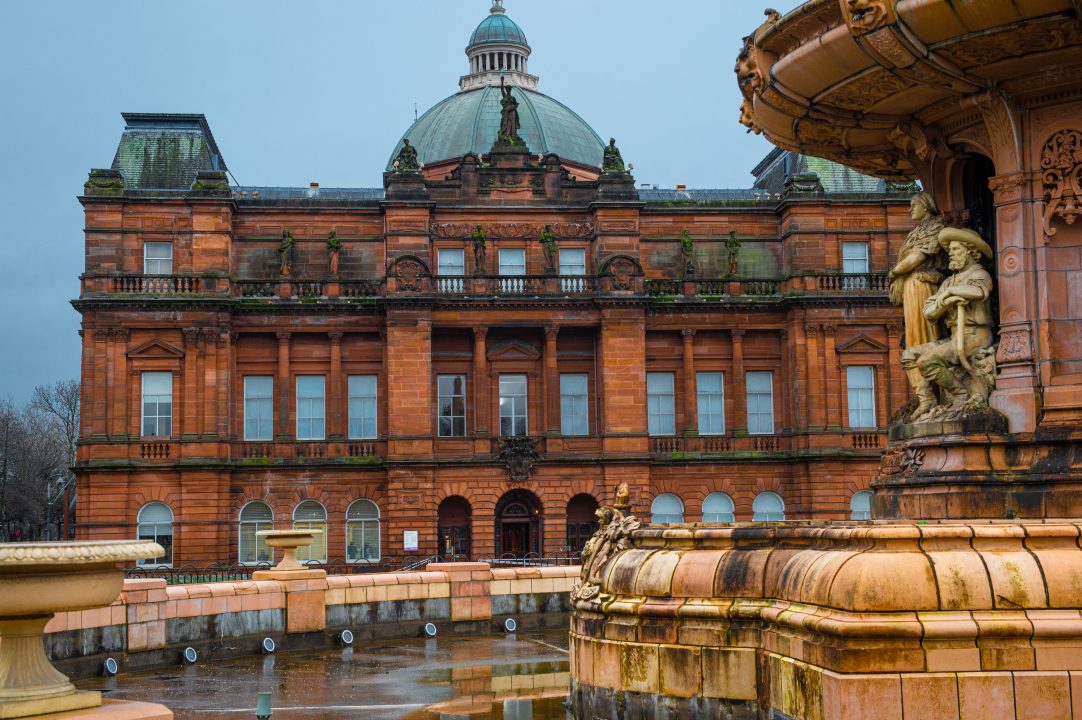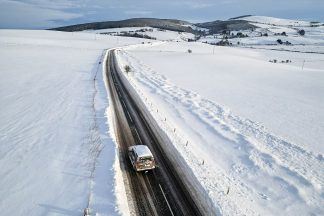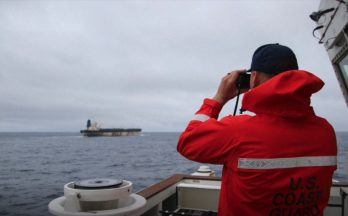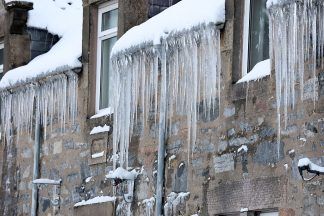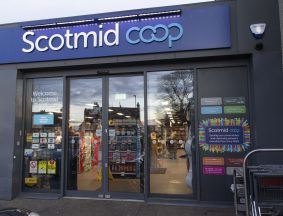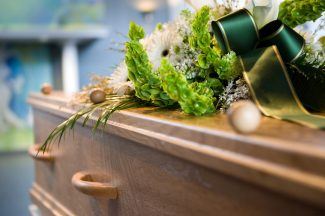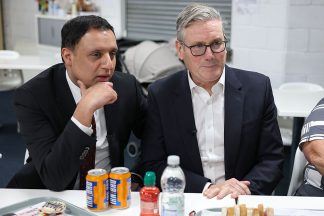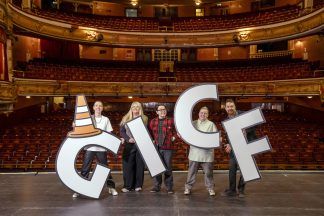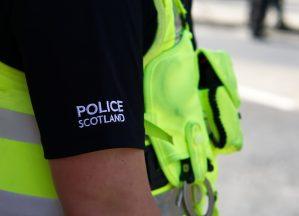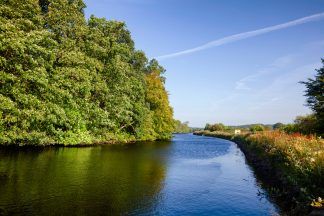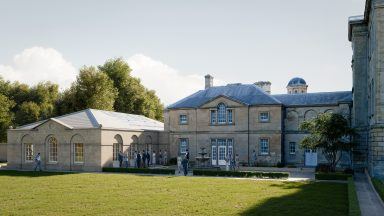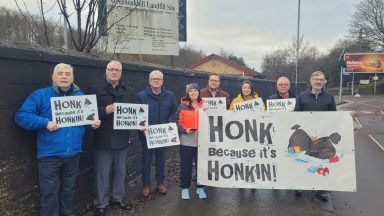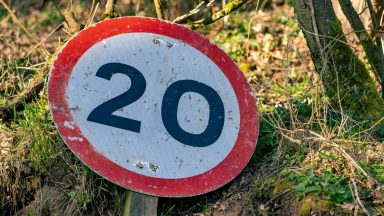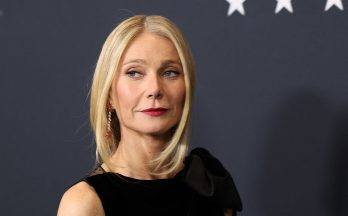For nearly 125 years, the People’s Palace has shone a light on Scotland’s history and the day-to-day lives of Glasgow’s working class through the ages.
Opened in Glasgow Green in 1898, the museum was intended to provide the masses with leisure opportunities and education, many of whom would not have seen their culture reflected in the prestige and high art of the city’s galleries.
The Palace is home to artefacts dating back to the 18th century – a single-end tenement, an air-raid shelter from the Second World War and Ken Currie’s famous Calton Weavers strike mural are among the most popular attractions.
Visitors can also learn about the Red Clydeside movement, the growth of Scotland’s trade unionism and suffragette history and the ordinary lives of those in the city over centuries.
Dr Elspeth King worked there as a curator between 1974 and 1990 and helped bring the Palace to life in her first exhibition: 800 years of Glasgow.
She told STV News: “I wasn’t really informed as I’d only got Glasgow history in school, so I had to get to grips quickly.
“The People’s Palace had been neglected for years – no input, no new displays. It needed freshness.
“The city was a giant demolition site at the time, a lot of comprehensive redevelopment areas and collecting opportunities were being ignored.”
She sparked backlash with one of her first creative choices; Billy Connolly’s iconic banana boots he wore on stage, designed and made for him by Glasgow pop artist Edmund Smith in 1975.
Members of the public argued the comedian’s expletive-ridden skits were too obscene to be celebrated at the museum.
His famous 1974 Crucifixion routine, which imagines Jesus’ Last Supper taking place at Glasgow’s Saracen Head pub, was deemed especially controversial.
Dr King said: “It was hilarious, but he was being picketed by Pastor Jack Glass outside the venue, who accused him of blasphemy and tried to shut him down.
“People said he was bringing Glasgow into disrepute and were shocked and horrified to see his boots on display. There was a lot of that at the time.”
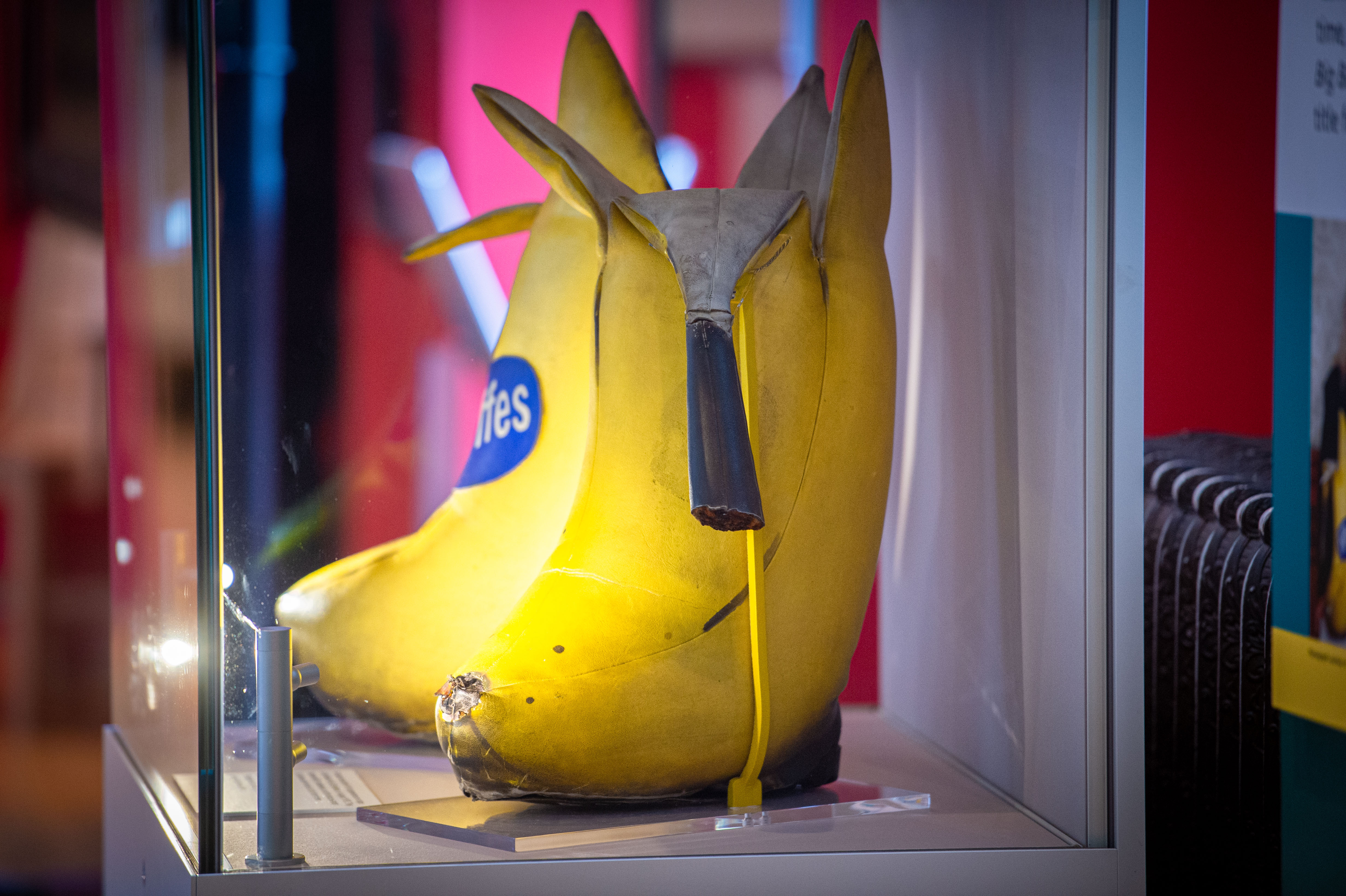 STV News
STV NewsBorn into a mining family in Fife, Dr King achieved a first-class degree in medieval history from the University of St Andrews, which saw her spend the year with the Order of Bridgettines in a Swedish convent.
Then, she enrolled in a postgraduate degree in Museum Studies at the University of Leicester before landing a job at the People’s Palace, starting off as a costume technician then later becoming a curator.
Dr King would soon learn her work involved pushing against the tides of tradition – and on a shoestring budget.
Along with her colleague Michael Donnelly, who she would one day marry, she scoured the Barras markets together most weekends; a haven for bric-a-brac and antiques that would best capture working life in the city.
They bought a wide range of artefacts from the stalls; a life-sized plaster Elvis bust, which was one of the best-selling items at the markets in the late 1970s, Borzoi dog sculptures from the 1930s and, on one grim excursion, a child’s coffin from a Masonic Lodge dating back to 1870.
Michael’s most prized find was a stone-framed tramp card belonging to a stonemason in Glasgow. Trade unions gave these to blacklisted workers to help them find work and a place to stay with fellow members in a new city.
“That was really rare, only a handful survived, and it’s still there as he made a stone frame to put it in,” she added.
The pair had amassed so many items which could no longer fit in Kelvingrove that they opened a storage facility in the old Templeton Carpet Factory after it closed in 1979.
“So many buildings were being demolished and people were dumping great piles of stuff at the Barras and it was up to us to separate the wheat from the chaff,” recalled Dr King.
“People were shedding hundreds of Victorian photographs. One of the things still on display at the museum is a cocktail cabinet designed as the bow of a ship, which lights up inside.
“We found a magnificent muckle wheel lying in the street for our Calton Weavers exhibition in 1978 – that was a fortuitous week.”
She described their hands-on curation efforts as “diametrically opposite” to how Glasgow shipping magnate William Burrell built his own collection with the help of dealers sent all over the world.
“What we were collecting wasn’t really approved of or supported – our colleagues called us midden-rakers,” she said.
“I think we got away with it as we weren’t inspected like at Kelvingrove, otherwise I think we would have been severely restricted.”
She added: “The Barras was an institution. No two days at the Barras were alike. There were always new discoveries and the craic was great.”
Chisel hammers in hand, the pair also ransacked condemned tenements and buildings across the Gorbals, Calton and Maryhill, collecting ceramic tiles and stained glass windows.
When the Palace Theatre in the Gorbals was to be pulled down in 1976, the pair salvaged plaster seat boxes flanked with dancing girls standing on elephants and a stained-glass ticket booth, which were eventually sent to London’s Victoria and Albert Museum.
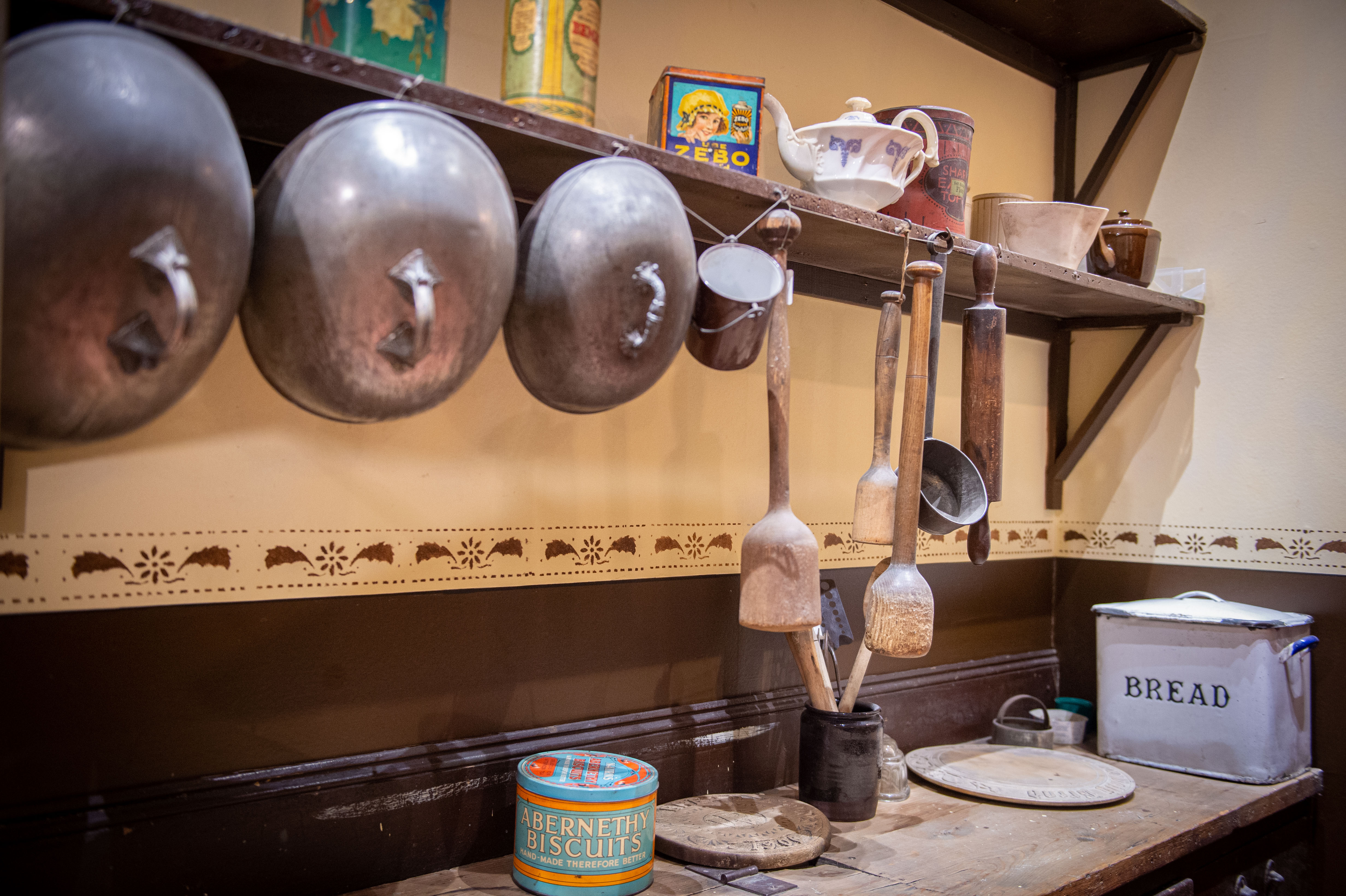 STV News
STV NewsThey also rescue a butcher’s counter from a shop being flattened in London Road.
Donnelly built up an impressive stained glass collection through their efforts, which earned the People’s Palace a Museum of the Year award in 1981.
“We were unscrewing door handles, art nouveau finger plates. We collected old metal tickets on the doors showing how many adults could live there and the cubic footage of the flat.
“We had so much bathroom clobber from fancy tenements that we built a high-end bathroom in the Palace, complete with a coffin bath from a home in Blythswood Square. It’s still there, though the handles have been taken off.
“It was such an exciting time.”
Museum bosses had taken issue with another of Dr King’s creative choices; using contemporary artists to fill in the gaps of the museum’s exhibitions.
Among the new hires was the late famed artist and author Alasdair Gray, then a budding painter at the Glasgow School of Art.
He was employed using money from the government’s Jobs Creation fund, with Dr King telling bosses he was there to record collections.
Instead, he was commissioned to create a series of portraits of Glasgow characters, from Clyde-built union leader Jimmy Reid to prominent nationalist politician Margo MacDonald.
Halfway through the project, Gray told the team he was going to the University of Glasgow to study creative writing and write his acclaimed debut novel Lanark.
“He was a joy to work with – his paintings were so valuable in reflecting Glasgow in the 1970s,” she said.
“The other week I showed them to older people in Hillhead, who recognised Pastor Jack Glass of Saltoon Street, Tom Leonard and Archie Hind.”
The museum laid bare the darker sides of Scotland’s common past, such as the role of alcohol in Glasgow society in its Temperance Movement exhibition on its 150th anniversary in 1979 (“It was hard to get any known temperance campaigner to open it by then,” Dr King admitted.)
There were also earlier efforts to acknowledge Glasgow’s role in the Transatlantic slave trade, with an exhibition displaying newspaper adverts from the 18th century offering rewards for the capture of enslaved people who had fled their captive.
The portrait of wealthy tobacco merchant John Glassford and family in the Palace also features an enslaved black boy, whose face was revealed after the painting was cleaned in 2007.
A silver collar, believed to have been worn by an enslaved person, was also once on display at the museum.
Though Glasgow has made efforts in recent years to acknowledge its colonial past and how it profited from the Transatlantic slave trade, Dr King believes more needs to be done.
She points to the Doulton Fountain near the museum, built to commemorate Queen Victoria’s Golden Jubilee in 1887.
“It extoles the empire, the fruits of slavery, and it’s right in your face,” she said. “All the soldiers of the empire underneath the Queen. It used to sit much further along the Green after it moved here from Kelvingrove.
“I don’t think it’s in an appropriate place and it hasn’t been interpreted properly either.”
She recalled Red Clydesider Harry McShane being left fuming over the monument’s place on the Green.
“He told me it’s the only piece of architecture in Glasgow he would willingly dynamite,” she said.
Another controversial display art was the Special Unit project, featuring works produced by some of Scotland’s most dangerous prisoners.
The penal reform scheme launched in the mid-1970s, led by convicted murderer-turned-sculptor and writer Jimmy Boyle.
A huge mural painted by at the jail was depicted in photographs at the museum, along with matchstick models prisoners created in secret which, upon being discovered, would be routinely destroyed by the officers.
“I’m still getting bad reactions from that,” she admitted. “People have always been divided on it – but this project had a special place in prison history.
“I wish politicians had had the courage of their convictions to continue with it, as it would be working well today.”
But Dr King believes her greatest legacy was honouring Scotland’s medieval history and the roots of Scotland, which had been largely forgotten in time.
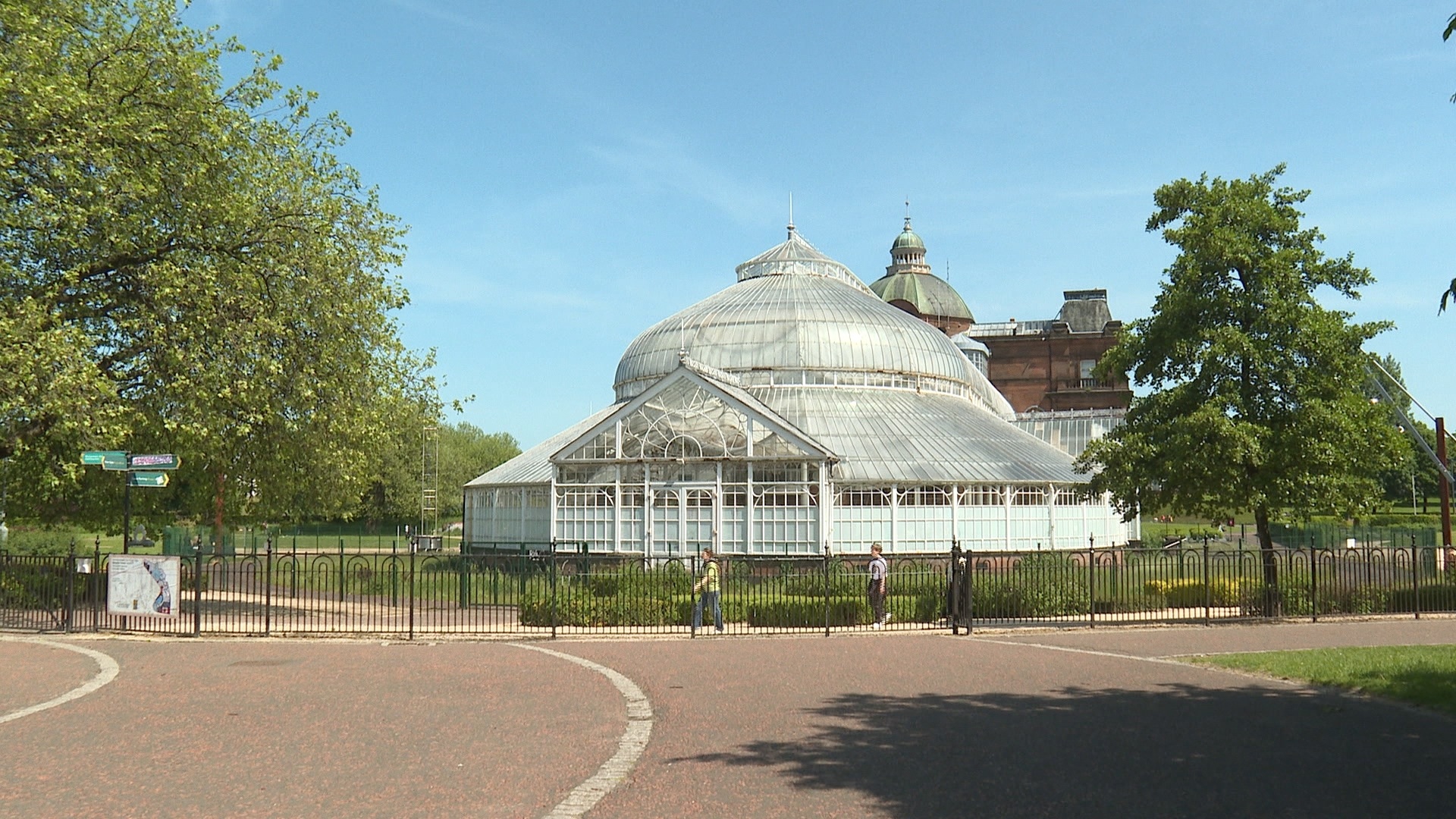 STV News
STV NewsThe Reformation, Robert the Bruce and how Glasgow Bishop Wishart helped seal Scotland’s fate in the Wars of Independence were told in the early history section, with contemporary artists from the Glasgow School of Art creating an exhibit.
“Without Glasgow and Bishop Wishart, Scotland would not be independent from England. That was one of the most important things we did.
“Those events have not been explored to their full potential and since I left, it is no longer there.”
Dr King shared fears that the future of the People’s Palace and the legacy she helped build is at stake.
She used the example of the Black Lives Matter movement, after which a letter was written by politicians to Glasgow Life asking that material was collected for posterity.
She said: “I was really upset. Why was collecting not taking place then and there? Why would they need to be told about that?
“History is when it happens. You’ve got to recognise that it’s an ongoing process and it’s not evident that it’s taking place. The People’s Palace will die without that.
“When the miners were marching on Glasgow Green, we bought the Fife to Glasgow banner and had it hanging before their demonstration ended.”
The museum has been open seven days a week since February after undergoing repairs to internal plasterwork while the Winter Gardens, closed since 2018, is having its glasswork restored.
“I’m keen to see better arrangements put in place, particularly with the presentation of the Winter Gardens. It’s so essential to the health, cultural identity and wellbeing of people in the city.”
She added wryly: “I have fears that if the Palace fails that it will be sacrificed to become a service hall for TRNSMT.
“We really must ensure our rich heritage is recognised and celebrated for generations to come. The Palace is by Glasgow and for Glasgow and we must protect it.”
A spokesperson for Glasgow Life said: “The People’s Palace and Winter Gardens remind us all how the Glasgow of today was shaped over several centuries, capturing life in the city as it grew to become world-renowned.
“Earlier this year, Glasgow City Council committed £2.9 million towards the full restoration of the People’s Palace and Winter Gardens. An application has been made to the UK Government’s £4.8 billion Levelling Up Fund to support the full restoration of the People’s Palace and Winter Gardens, and we await the UK Government’s decision.
“If successful, the allocation of these levelling up funds from the UK Government would enable work to start on the refurbishment and reimagining of these well-loved Glasgow institutions. Over the coming months, further funding bids will be submitted to ensure the full costs of the project are covered while full plans that take the recent public consultation results into account are developed.”
Follow STV News on WhatsApp
Scan the QR code on your mobile device for all the latest news from around the country


